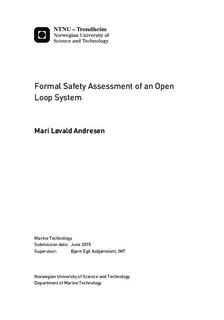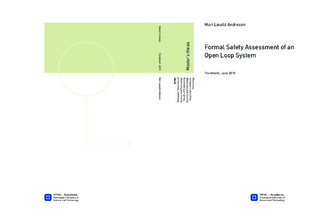| dc.description.abstract | Shipping burns approximately 300 million tonnes of fuel per year, and 12 million tonnes of sulphur oxides (SOx) are emitted, annually. The International Maritime Organization (IMO) set the standards for the safety, security and environmental performance of international shipping, globally and have even stricter standards in Emission Control Areas (ECAs). The maritime industry is facing challenges in meeting imposed requirements given by IMO. Among others, Regulation 14 in MARPOL Annex VI sets limitations on sulphur oxides and particulate matter. On and after January 1st 2020 the sulphur content of any fuel oil used onboard ship shall not exceed 0.50% m/m. However, the implementation date is to be reviewed in 2018 to see if the limit is achievable within the set time frame. Besides, on and after January 1st 2015 the sulphur content of any fuel oil used onboard ship shall not exceed 0.10% m/m in ECA.
Exhaust gas cleaning systems, also known as scrubbers, have extensive land-bases experience. Regulation 4 in MARPOL Annex VI states that it is allowed to use an alternative compliance method which is at least as effective in terms of emission reductions as required in MARPOL Annex VI, and the standards in Regulation 14. Hence, 2009 Guidelines for Exhaust Gas Cleaning Systems (i.e. MEPC.184(59)) was adopted on July 17th 2009 by IMO, where the intention is to specify the requirements for the testing, survey, certification, and verification of scrubbers.
The objective of this master thesis was to evaluate an open loop system through Formal Safety Assessment to gain greater understanding on the challenges this technology has in relation to system risks and safety. The Formal Safety Assessment is a new approach in the maritime industry, and can be used as a tool to help evaluate new regulations or to compare proposed changes within existing standards. The technique consists of five steps: identification of hazards, risk analysis, risk control options (RCOs), cost-benefit assessment, and recommendations for decision-making.
All steps of the Formal Safety Assessment were carried out on an open loop system manufactured by Wärtsilä. The basis of the assessment was a preliminary version of a P&ID of the open loop system, which was further simplified by the author. The qualitative (e.g. failure modes, failure causes) and quantitative (i.e. λ/E6, MTTR) inputs through the analysis were extracted from the handbook Offshore Reliability Data (OREDA).
A FMECA and a risk matrix were created in the first step to identify hazards. Risk Control Tree (RCT) was modelled in the second step, where the material from the first step was evaluated quantitatively. In the third step, the results from the second step were utilised to propose effective and practical risk control measures of the given open loop system. Benefits and costs associated with implementing the risk control options were identified and compared in the fourth step. Finally, recommendations for decision-making were determined on the basis of the previous steps.
On the grounds of 153 cases of components with a specific failure mode in the FMECA, 52% are ranked with low risk, 45% with medium risk, and 3% with high risk. The scrubber system has the highest risk within medium and high risk, where the drainpipe and the injection nozzles are the most critical components. The modelled Risk Contribution Tree (RCT) consists of six fault trees and three event trees, distributed within three accident categories (i.e. Overpressure, Hazards related to loading/discharging operations, Purification failure). The fault trees were constructed and quantitatively analysed in software CARA-FaultTree. The observations showed that the most critical top events are overpressure in scrubber device and venturi, and difficulties with purifying washwater. The end events with high material damage in the event trees have relatively low frequencies per year, as an effect of reliable safety systems within the scrubber system and low frequencies of the initiating events. The following risk control options increase the reliability of the open loop system: improvement of corrective maintenance, review the preventive maintenance procedures, redundancy in inlet monitor and outlet monitor, and reinforcement of joints between nozzles, pipelines and scrubber casing. In a cost-benefit aspect, redundancy of monitors and reinforcement of joints are the most beneficial solutions to increase the open loop system s reliability in a feasible and safe matter.
Based on the results from the Formal Safety Assessment, it is concluded that the open loop system is considered to be highly reliable. However, with improvement of risk control options, as additional monitors and reinforcement of joints inside the scrubber device, the system increases its availability significantly. The adoption will increase the time of operation of the system, and assist the system to meet the guidelines in resolution MEPC.184(59). The results are applicable for shipowners, class societies, and manufactures. By knowing the critical components, the open loop system(s) can increase operation performance and reliability. The perfections are especially of great importance since the purpose of scrubbers is to meet the imposed limitations on sulphur oxides. | |

